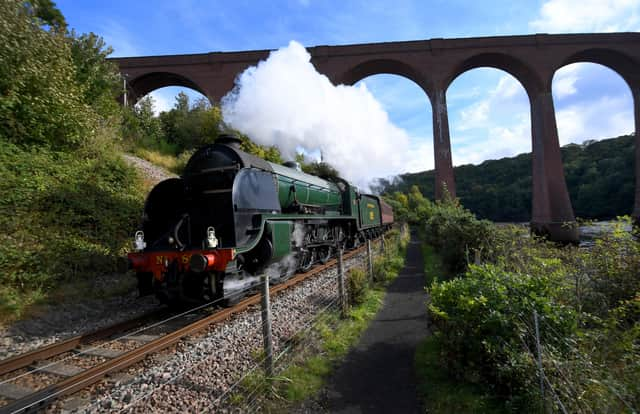Picture Post: Historic train goes full steam ahead to the coast


Originally designed for the London & South Western Railway in 1920 by Robert Urie, the S15 was designed as a heavy freight locomotive to operate between London and the south coast ports. The class proved so useful that further batches were built by the Southern Railway in 1927 and 1936 with some modifications by their chief engineer Richard Maunsell.
S15s served on the Southern Railway and into British Railways days before retiring as part of the Modernisation Plan – the last journey a farewell tour in January 1966.
Advertisement
Hide AdAdvertisement
Hide AdThe 825 was built in April 1927 at Eastleigh works near Southampton and along with most of the class was allocated to Feltham. By the time of nationalisation she was based at Exeter Junction before moving to Salisbury in 1951 and remaining there until withdrawn in January 1964.
No. 825 is one of three S15 locomotives owned by the Essex Locomotive Society, all of which are stabled at the North Yorkshire Moors Railway.
She was a regular on the line until her boiler ticket expired in 2013.
The boiler was overhauled in Scarborough while the tender and frames were worked on at Grosmont with a combination of ELS resources and NYMR help as required.
Advertisement
Hide AdAdvertisement
Hide AdThe steam locomotive is now operational once again on the North Yorkshire Moors Railway.
The other two S15s – 830 and 841 “Greene King” are also stored at Grosmont, and both have acted as parts donors to keep 825 running.
At present restoration of these two locomotives is a much longer-term project and there are insufficient resources available to make any plans for their restoration.
As it travels towards Whitby on the North Yorkshire Moors Railway the locomotive passes under the Larpool Viaduct.
Advertisement
Hide AdAdvertisement
Hide AdThis viaduct, also known as the Esk Valley Viaduct, is a 13 arch brick viaduct built to carry the Scarborough & Whitby Railway over the River Esk, North Yorkshire.
Technical details: Nikon D5 camera, 12-24mm lens, 1/1000th second at f/8, ISO 400.
Comment Guidelines
National World encourages reader discussion on our stories. User feedback, insights and back-and-forth exchanges add a rich layer of context to reporting. Please review our Community Guidelines before commenting.